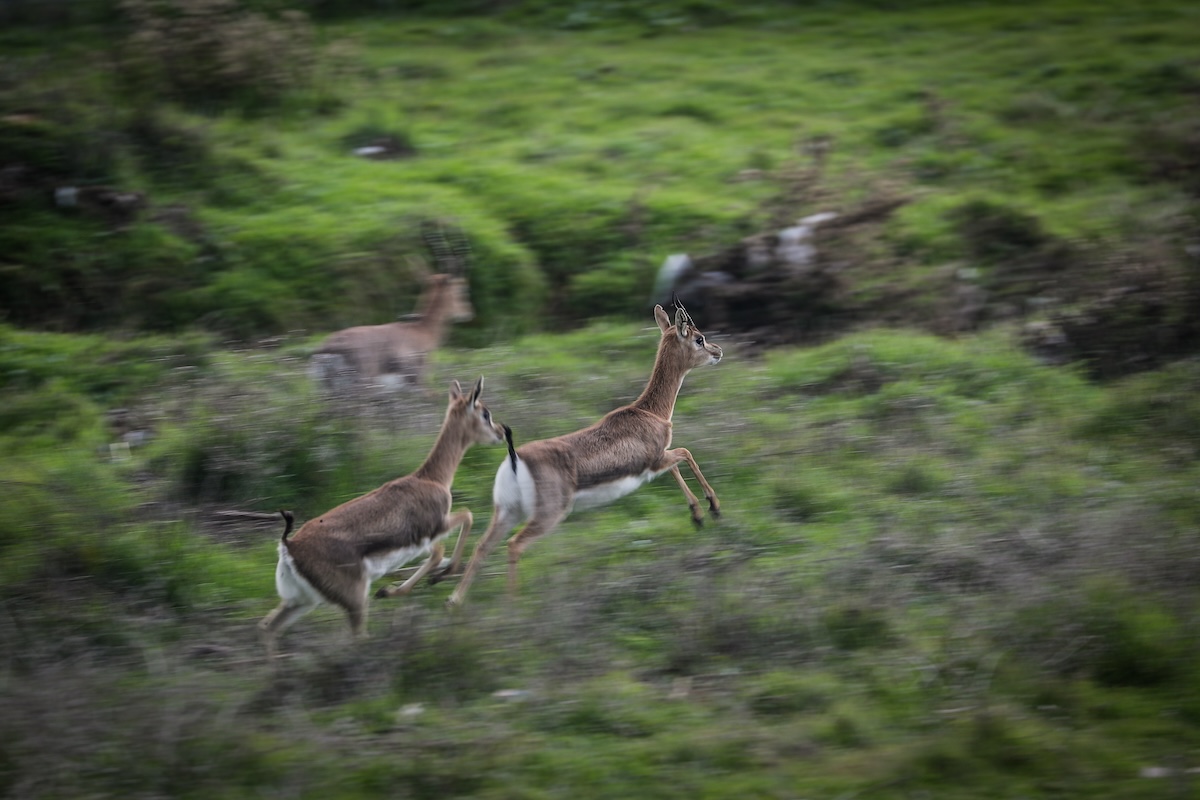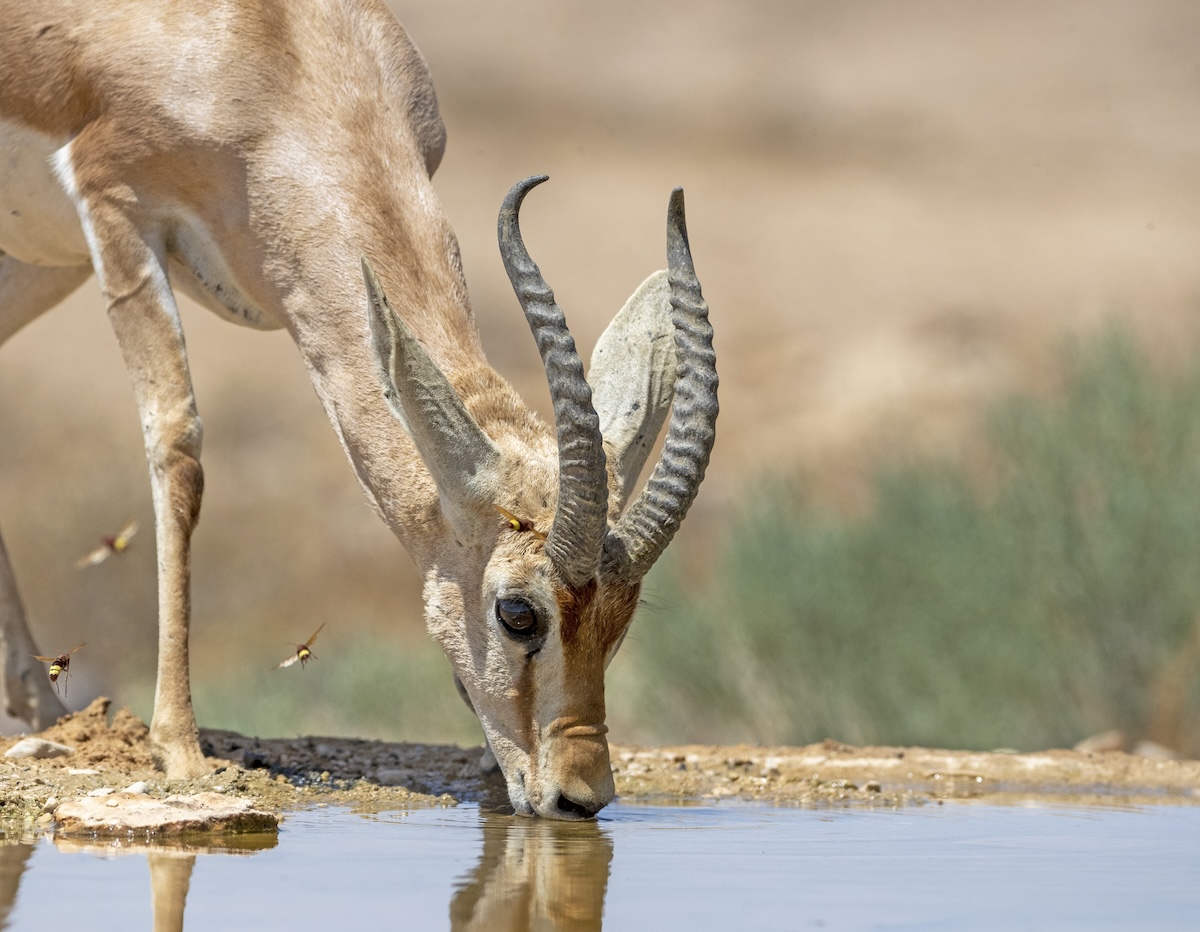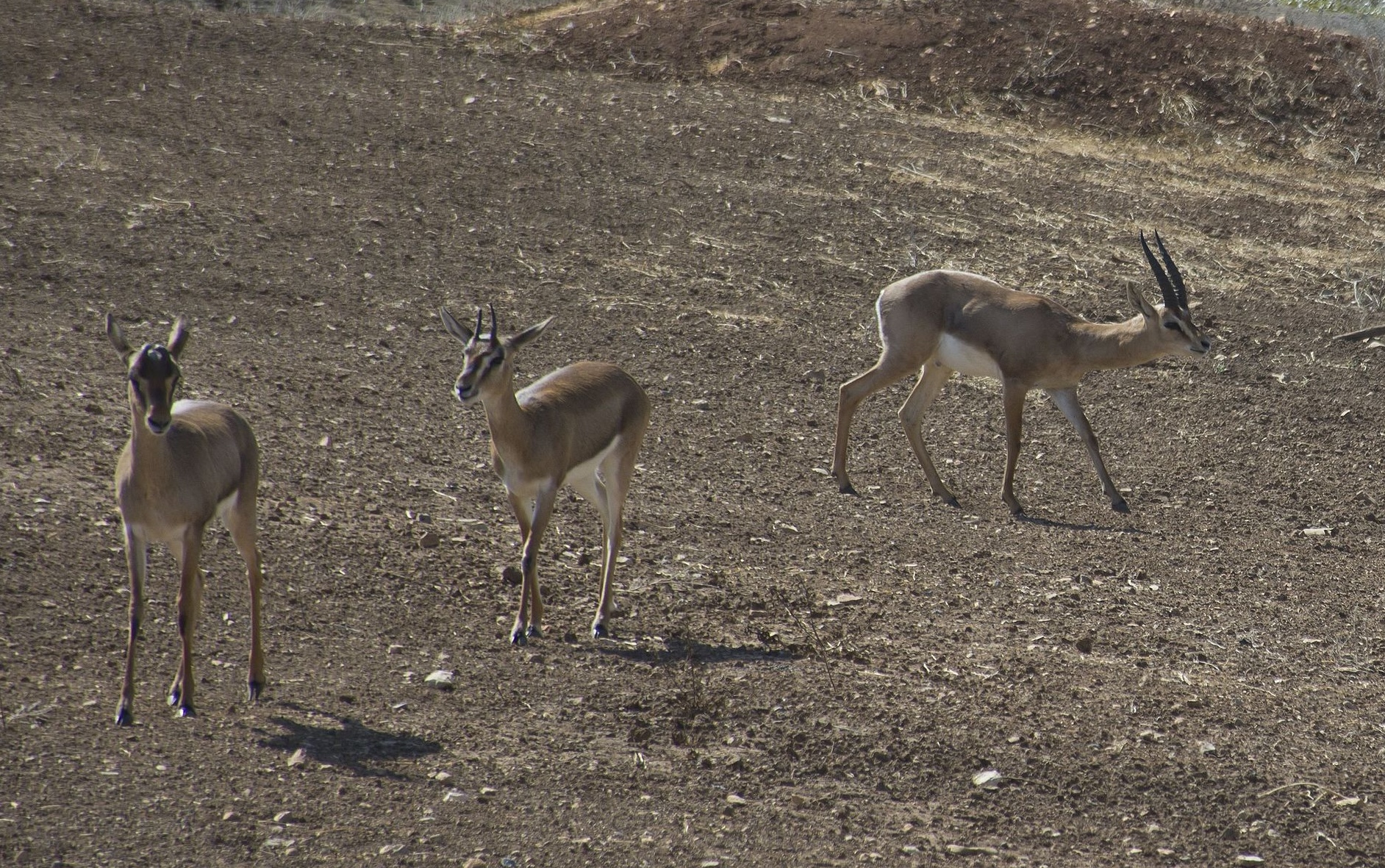Gazelles leap from the sacred text of Bible to the rugged landscapes of Israel

Did you know that the Mountain Gazelle, with its fleetness, can surge forth at speeds of up to 50 mph (80 km/h)? Let's contemplate this graceful creature as we immerse ourselves in this beautiful declaration:
“Look! Listen! There’s my lover! Do you see him coming? Vaulting the mountains, leaping the hills. My lover is like a gazelle, graceful; like a young stag, virile. Look at him there, on tiptoe at the gate, all ears, all eyes –ready! My lover has arrived and he’s speaking to me! Get up, my dear friend, fair and beautiful lover – come to me!” (Song of Songs 2:8-15).

In the lyrical verses of the Song of Songs (2:17; 8:14), the lover is likened to a gazelle, while the beloved's attributes are tenderly compared to the gentle elegance of this remarkable creature (Song of Songs 4:5; 7:3).
This recurring imagery underscores the significance of the graceful gazelle throughout the Bible and symbolically, gazelles embody swiftness, as depicted in various passages (1 Chronicles 12:8; Proverbs 6:5.
Moreover, in the Book of Daniel 8:9; Israel is described as "the land of the gazelle" (ארץ-הצבי, eretz hatzvi), using the Hebrew word צבי (tzvi), which carries connotations of "glory," painting the nation with a radiant sense of splendor (Daniel 11:16,41,45).
Throughout scripture, gazelles appear in various contexts, including lists of permitted foods in Deuteronomy (12:22; 14:5; 15:22) and among the provisions for King Solomon's household (1 Kings 4:23).
In the prophetic vision of Isaiah, the imagery of gazelles takes on a poignant tone. In Isaiah 13, amidst the foretelling of the Day of the LORD and its terrors, humanity's response is described as fleeing like hunted gazelles, emphasizing the instinctive reaction to impending danger (Isaiah 13:14).
Becoming acquainted with the gazelle
Israel is home to three different gazelle species: the Mountain Gazelle, which can be found in the north and the center of the country; the Dorcas Gazelle, native to the Negev desert; and the critically endangered Acacia Gazelle, which can be found in vanishingly small numbers in the Arava Valley. They are mainly descendants of a migration from North Africa, which gradually displaced the common species from certain regions of the Negev and Sinai thousands of years ago.

The gazelle typically inhabits the flat summits and ridges of mountains, hills and valleys. Mountain gazelles are known as crepuscular creatures, meaning they are most active during the early morning and late evening hours, while resting during the day and night. They exhibit strong territorial behavior within their herds and tend to stick together in groups consisting of three to eight individuals.
The gazelle species has evolved to thrive in dry, arid environments. During the summer months, gazelles seek refuge from the scorching heat beneath the shade of acacia trees, where they primarily feed on the leaves and fruits. Interestingly, this dietary choice not only sustains them but also fulfills their water requirements.

Both genders of the gazelle sport horns, which become pivotal during male-to-male conflicts and serve as a deterrent against smaller predators. While its keen sense of hearing and vision enables it to perceive threats and potential dangers from a distance, assisting in tasks such as foraging for food and marking territories, the gazelle still maintains a vulnerability.
Hunting mountain gazelles was banned in Israel as early as 1955, however, the population in the Negev region experienced a perilous decline during the 1960s and 1970s, largely due to widespread hunting.
In 1985, an outbreak of foot and mouth disease devastated approximately 1,500 gazelles. After the implementation of the "Wildlife Protection Law," the incidence decreased, and a noticeable rebound in the population numbers was observed.
Formerly a habitat for a herd of wild gazelles, a valley in the Jerusalem area underwent a significant change in 1993 when their passage to the mountains was blocked by a new highway, confining the gazelles.
For more than 12 years, residents of neighboring streets battled to preserve the valley until the successful establishment of Gazelle Valley in 2015.
This achievement was lauded by The Society for the Protection of Nature in Israel as: “The biggest urban nature site in Israel. It is the best place to watch the mountain gazelle’s species in their natural habitat. About 65 members of this endangered species are living in the park, leading a mostly natural lifestyle. Like in the wild, the gazelles find food on their own, breed, raise their young, and fight over territory. Alongside the gazelles, the Gazelle Valley park in Jerusalem is home to dozens of species of birds, reptiles, insects and plants, creating a functioning urban ecosystem."

Although mountain gazelles are currently classified as an endangered species, as of 2020, Israel's Nature and Parks Authority has documented approximately 5,000 gazelles dispersed across the country.
In a rare discovery in April 2024, a six-legged gazelle with an unusual genetic defect was spotted by an IDF reservist traversing the Western Negev region.
Across all narratives, with their varied characteristics, strengths, and vulnerabilities, Gazelles serve as emblematic figures of Israel, embodying the graceful magnificence that enriches the Israeli terrain.

The All Israel News Staff is a team of journalists in Israel.














